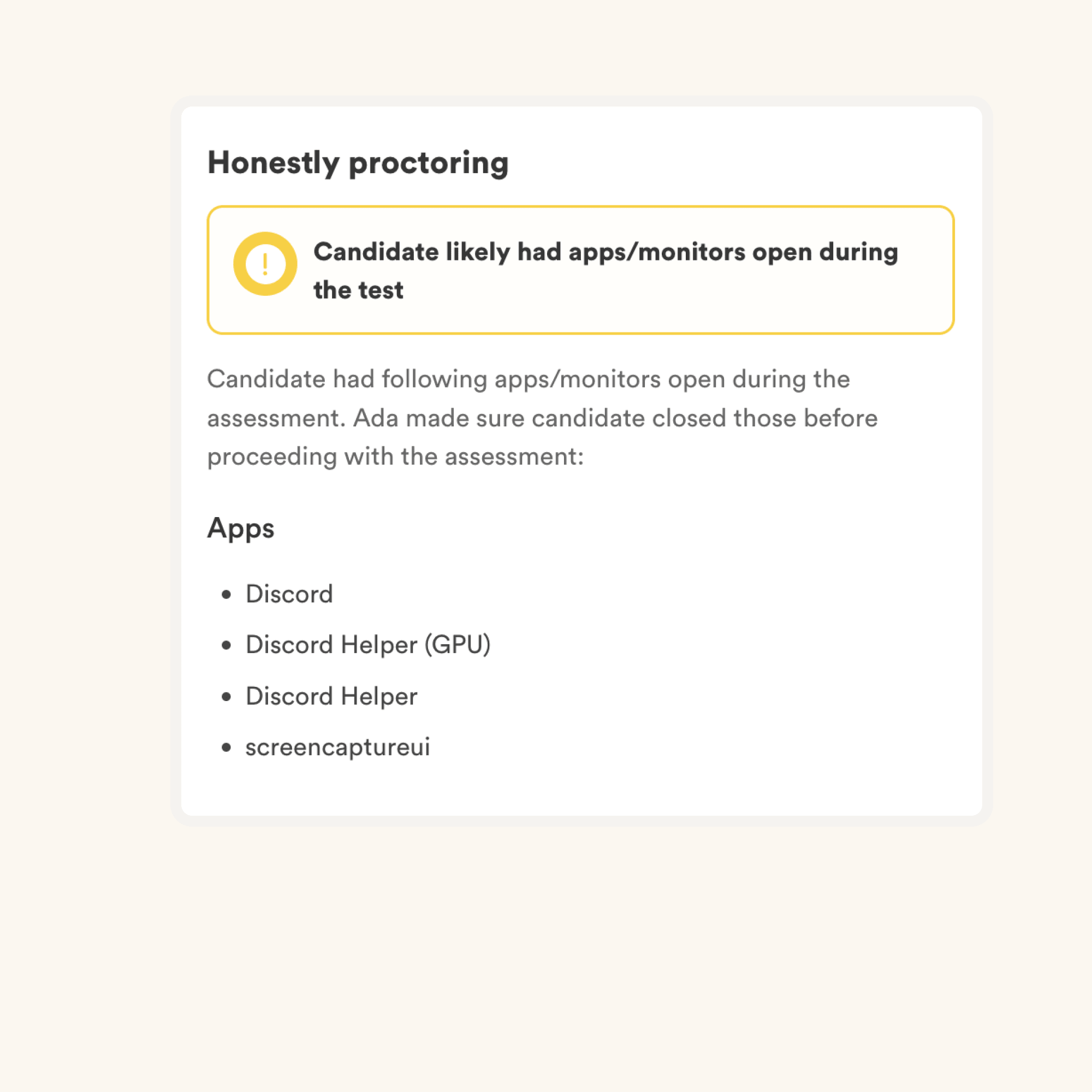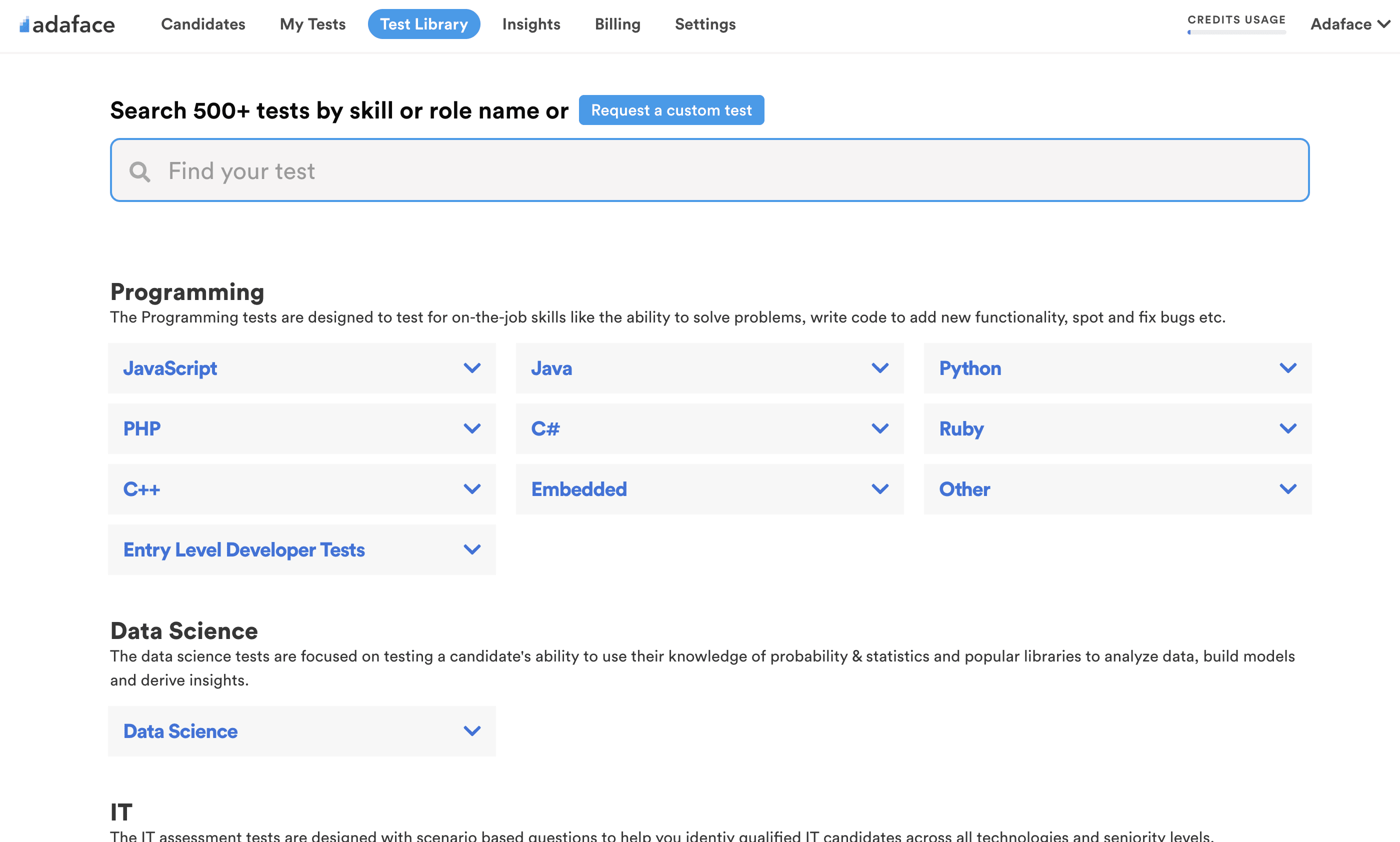Test Duration
45 minsDifficulty Level
Moderate
Questions
- 5 Power BI MCQs
- 5 Power Apps MCQs
- 5 Power Automate MCQs
- 1 Coding Question
Availability
Ready to useThe Microsoft Power Platform Developer Test uses scenario-based multiple choice questions to evaluate candidates on their ability to design and develop custom solutions using the Power Platform. Key skills and topics evaluated in the test include proficiency in Power Apps development, Power Automate development, Power BI development, Microsoft Dataverse, data modeling, plugin development, custom connectors, and Azure Functions.
Covered skills:
Test Duration
45 minsDifficulty Level
Moderate
Questions
Availability
Ready to useThe Microsoft Power Platform Developer Test is designed to assist recruiters and hiring managers in pinpointing skilled candidates from a multitude of applicants, streamlining the hiring process with data-backed evaluations. This test significantly reduces the time invested in interviewing unqualified candidates by providing a clear and objective assessment of their abilities right from the start.
This test evaluates a candidate's proficiency across several key areas within the Power Platform. It assesses their aptitude in Power BI, including data visualization and report creation. The test also examines their knowledge of Power Apps Development, focusing on building custom business applications. Furthermore, it gauges their capabilities in Power Automate, specifically in designing and implementing automated workflows. Finally, the test includes a coding question to evaluate the candidate's general programming aptitude, ensuring a rounded assessment of their development abilities.
Use Adaface tests trusted by recruitment teams globally. Adaface skill assessments measure on-the-job skills of candidates, providing employers with an accurate tool for screening potential hires.
We have a very high focus on the quality of questions that test for on-the-job skills. Every question is non-googleable and we have a very high bar for the level of subject matter experts we onboard to create these questions. We have crawlers to check if any of the questions are leaked online. If/ when a question gets leaked, we get an alert. We change the question for you & let you know.
How we design questionsThese are just a small sample from our library of 15,000+ questions. The actual questions on this Microsoft Power Platform Developer Test will be non-googleable.
| 🧐 Question | |||||
|---|---|---|---|---|---|
|
Medium
Data Filtering
|
Solve
|
||||
|
|
|||||
|
Medium
Many-to-one error
|
Solve
|
||||
|
|
|||||
|
Medium
Power Query Functions
|
Solve
|
||||
|
|
|||||
|
Medium
Approval Chain with Dynamic Routing
|
Solve
|
||||
|
|
|||||
|
Medium
Implementing a Custom API Call
|
Solve
|
||||
|
|
|||||
|
Medium
Streamlining Customer Feedback
|
Solve
|
||||
|
|
|||||
| 🧐 Question | 🔧 Skill | ||
|---|---|---|---|
|
Medium
Data Filtering
|
2 mins Power BI
|
Solve
|
|
|
Medium
Many-to-one error
|
2 mins Power BI
|
Solve
|
|
|
Medium
Power Query Functions
|
2 mins Power BI
|
Solve
|
|
|
Medium
Approval Chain with Dynamic Routing
|
3 mins Power Automate
|
Solve
|
|
|
Medium
Implementing a Custom API Call
|
3 mins Power Automate
|
Solve
|
|
|
Medium
Streamlining Customer Feedback
|
3 mins Power Automate
|
Solve
|
| 🧐 Question | 🔧 Skill | 💪 Difficulty | ⌛ Time | ||
|---|---|---|---|---|---|
|
Data Filtering
|
Power BI
|
Medium | 2 mins |
Solve
|
|
|
Many-to-one error
|
Power BI
|
Medium | 2 mins |
Solve
|
|
|
Power Query Functions
|
Power BI
|
Medium | 2 mins |
Solve
|
|
|
Approval Chain with Dynamic Routing
|
Power Automate
|
Medium | 3 mins |
Solve
|
|
|
Implementing a Custom API Call
|
Power Automate
|
Medium | 3 mins |
Solve
|
|
|
Streamlining Customer Feedback
|
Power Automate
|
Medium | 3 mins |
Solve
|
With Adaface, we were able to optimise our initial screening process by upwards of 75%, freeing up precious time for both hiring managers and our talent acquisition team alike!
Brandon Lee, Head of People, Love, Bonito
It's very easy to share assessments with candidates and for candidates to use. We get good feedback from candidates about completing the tests. Adaface are very responsive and friendly to deal with.
Kirsty Wood, Human Resources, WillyWeather
We were able to close 106 positions in a record time of 45 days! Adaface enables us to conduct aptitude and psychometric assessments seamlessly. My hiring managers have never been happier with the quality of candidates shortlisted.
Amit Kataria, CHRO, Hanu
We evaluated several of their competitors and found Adaface to be the most compelling. Great library of questions that are designed to test for fit rather than memorization of algorithms.
Swayam Narain, CTO, Affable
The Adaface test library features 500+ tests to enable you to test candidates on all popular skills- everything from programming languages, software frameworks, devops, logical reasoning, abstract reasoning, critical thinking, fluid intelligence, content marketing, talent acquisition, customer service, accounting, product management, sales and more.
The Microsoft Power Platform Developer Test evaluates a candidate's skills in Power BI, Power Apps, and Power Automate. It is designed for recruiters to assess the proficiency of candidates in these areas for developer roles.
Yes, recruiters can request a custom test. For more details on assessing Advanced Networking in Azure skills, refer to our Advance Networking in Azure Test.
The test covers skills such as Power BI, Power Automate, Power Apps Development, and Programming Ability. It includes implementing error handling, integrating Power Apps with Power Automate, and more.
Use this test as a pre-screening tool during early recruitment stages. Add the test link to your job post or invite candidates directly via email.
Yes, you can test both Power BI and Power Apps in a combined test. This approach is recommended to comprehensively assess a candidate's Power Platform skills. Refer to our Microsoft Power Platform Functional Consultant Test for a suitable combo.
Some main Power Platform tests include:
Yes, absolutely. Custom assessments are set up based on your job description, and will include questions on all must-have skills you specify. Here's a quick guide on how you can request a custom test.
We have the following anti-cheating features in place:
Read more about the proctoring features.
The primary thing to keep in mind is that an assessment is an elimination tool, not a selection tool. A skills assessment is optimized to help you eliminate candidates who are not technically qualified for the role, it is not optimized to help you find the best candidate for the role. So the ideal way to use an assessment is to decide a threshold score (typically 55%, we help you benchmark) and invite all candidates who score above the threshold for the next rounds of interview.
Each Adaface assessment is customized to your job description/ ideal candidate persona (our subject matter experts will pick the right questions for your assessment from our library of 10000+ questions). This assessment can be customized for any experience level.
Yes, it makes it much easier for you to compare candidates. Options for MCQ questions and the order of questions are randomized. We have anti-cheating/ proctoring features in place. In our enterprise plan, we also have the option to create multiple versions of the same assessment with questions of similar difficulty levels.
No. Unfortunately, we do not support practice tests at the moment. However, you can use our sample questions for practice.
You can check out our pricing plans.
Yes, you can sign up for free and preview this test.
Here is a quick guide on how to request a custom assessment on Adaface.












